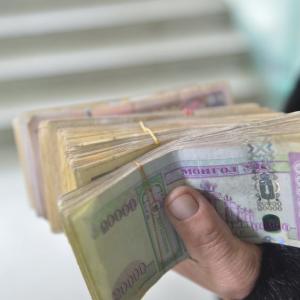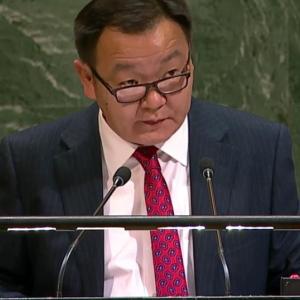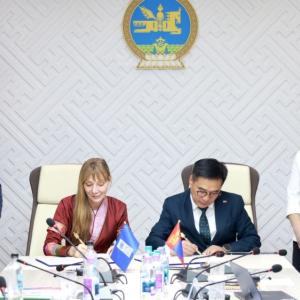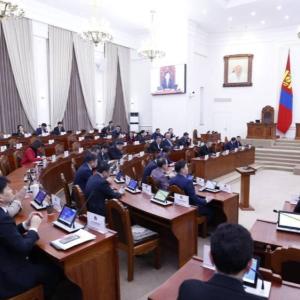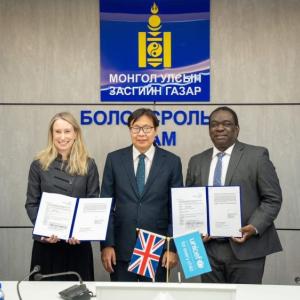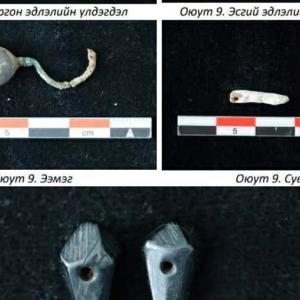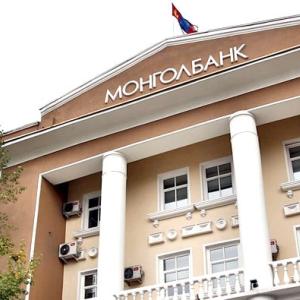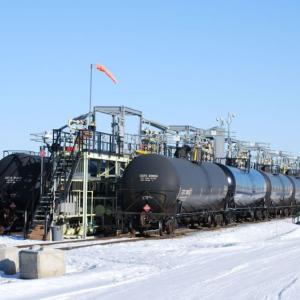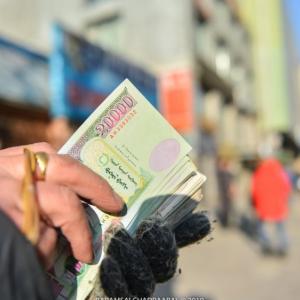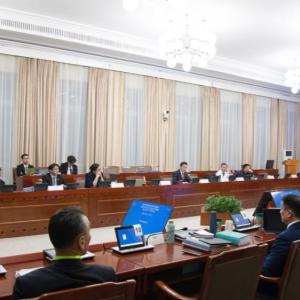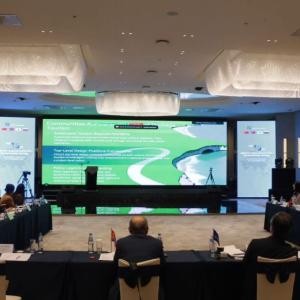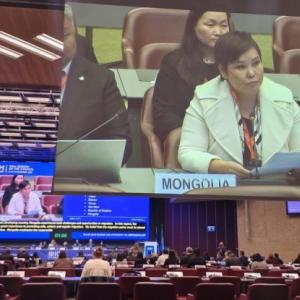Fitch affirms Mongolia at 'B'; Outlook Stable
Economy
Ulaanbaatar /MONTSAME/ Mongolia's commodity-dependent economy is facing a sharp slowdown in GDP and export growth, deterioration in the public finances and an erosion in external buffers this year due to the coronavirus shock. Nevertheless, the affirmation of the rating with a Stable Outlook reflects Fitch's assessment that the impact of the shock will be largely temporary, with the economy rebounding strongly and government debt/GDP starting to decline again in 2021. Significant downside risks are captured at the 'B' rating level, and Mongolia's strong structural factors combined with expected access to financing from multilateral and bilateral creditors provide support to the sovereign ratings.
Fitch forecasts the economy
to contract by 2% in 2020, before rebounding to 7.9% in 2021. Our baseline
assumes demand from China, which accounts for around 90% of Mongolia's exports,
will pick up during the second half of this year. This is underscored by a
gradual improvement in China's industrial production and investment spending
since April. At the same time, downside risks to Mongolia's growth outlook
remain amid uncertainty on how the pandemic develops globally, as well as the
speed of China's recovery.
Real GDP fell by 10.7% yoy in
the first quarter, driven in large part by measures to prevent the local spread
of the coronavirus. This included a temporary suspension of coal exports to
China during February and March, tight restrictions on international flights
and railways, and strict social-distancing measures. Mongolia has seen relative
success in containing the coronavirus, with 141 officially reported cases.
Fitch forecasts a budget
deficit of 7.1% of GDP in 2020, up from a 1.4% surplus last year. Our forecast
is wider than the government's baseline of 2.5%, due mainly to our view that
the revenue decline will be more severe. In March, the authorities unveiled an
economic stimulus package valued at around 13% of projected 2020 GDP. However,
this includes reordering of expenditure priorities, and Fitch estimates that
measures that will add directly to the budget deficit are around 4% of GDP. Key
fiscal priorities include select infrastructure projects, as well as fiscal and
tax relief measures. The risk of a sharp rise in pre-election spending ahead of
parliamentary elections on 24 June, as was the case in 2016, has thus far not
materialised, and Fitch now anticipates fiscal restraint to remain broadly
intact.
Fitch projects that the
fiscal deficit and growth contraction will drive up the general government
gross debt (GGGD) to around 70% of GDP by end-2020, from 65% of GDP in 2019. We
expect GGGD to resume its downward trend in 2021 and decline to 57% by 2024,
below the current 'B' median level of 60%. Prior to the coronavirus outbreak,
Mongolia had made significant progress in reducing public debt from 93% of GDP
in 2016, underpinned by strong budget outcomes aided by robust growth and
supportive commodity prices.
We forecast foreign-currency
reserves (USD4.1 billion in 1Q20) to decline to USD3.1 billion by end-2020,
equivalent to 4.1x current-external payments. The sovereign faces no marketable
external bond maturities until April 2021, after a USD500 million
private-sector external bond carrying a government guarantee matured in May
2020. Fitch forecasts the current account deficit to widen to 14.7% of GDP in
2020 (4.6% of GDP net of FDI, or USD645 million), before narrowing to 11.9% in
2021. Nevertheless, reserves are low and a rating weakness, particularly in
view of a substantial step up in amortisation in 2021-2023.
IMF staff have completed
discussions on a USD99 million loan under its Rapid Financing Instrument (RFI)
to help meet the country's budgetary and balance of payments needs, and we
expect IMF board approval in early June. In completing the discussions, IMF
staff noted Mongolia's progress in reducing public debt and accumulating
reserves under the three-year Extended Fund Facility (EFF) that expired on 23
May. The Asian Development Bank (ADB) has also recently approved new loans and
a grant worth USD233 million in budget support and project financing. The
authorities are also exploring a possible follow-on program to the EFF, as
reflected in the IMF's media statement following staff discussions on the RFI.
The Mongolian parliament
unanimously passed a resolution last November requiring the government to
review ways to improve the Oyu Tolgoi investment agreement. Fitch believes this
underscores the longstanding strained relations between the government and Rio
Tinto over taxation, delays and other aspects of the large-scale copper mining
project, as well as the potential for heightened political volatility around
resource nationalism. However, Fitch does not believe this will lead to a
material disruption in Oyu Tolgoi's development, given the significant
implications this would have for Mongolia's macroeconomic stability, and the
considerable investment that Rio Tinto has already deployed into the country.
Mongolia's rating is
supported by World Bank Governance Indicators (WBGIs), GDP per capita, and
World Bank Doing Business rankings that are stronger than the 'B' range median.
GDP growth potential is high. However, net external debt is high at 176% of GDP
at end-2019.
Fitch has a negative sector
outlook on Mongolian banks, which reflects our expectation that the pandemic
will put additional pressure on banks' asset quality. The banking sector
non-performing loan ratio stood at 10.9% as of end-April 2020. A combination of
the Bank of Mongolia cutting interest rates by 200bp so far in 2020, slower
credit growth than previously expected and a higher credit-loss provision is
likely to put pressure on banks' profitability.
Source: FitchRatings







